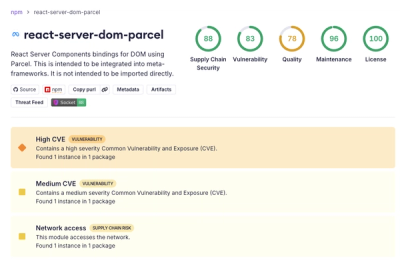


react-gtm-module
React Google Tag Manager Module
This is a Javascript module to React based apps that implement Google Tag Manager. It is designed to use GTM snippet.
You can easily use custom dataLayer, multiple dataLayers and additional events.
Installation
npm:
npm install react-gtm-module --save
Usage
Initializing GTM Module:
import React from 'react'
import ReactDOM from 'react-dom'
import Router from 'react-router'
import routes from './routes'
...
import TagManager from 'react-gtm-module'
const tagManagerArgs = {
gtmId: 'GTM-000000'
}
TagManager.initialize(tagManagerArgs)
...
const app = document.getElementById('app')
ReactDOM.render(<Router routes={routes} />, app)
DataLayer
Custom dataLayer example:
import React from 'react'
import ReactDOM from 'react-dom'
import Router from 'react-router'
import routes from './routes'
...
import TagManager from 'react-gtm-module'
const tagManagerArgs = {
gtmId: 'GTM-000000',
dataLayer: {
userId: '001',
userProject: 'project'
}
}
TagManager.initialize(tagManagerArgs)
...
const app = document.getElementById('app')
ReactDOM.render(<Router routes={routes} />, app)
Multiple dataLayer example:
If you need send multiple custom dataLayer you can initialize GTM Module on different components sending different dataLayers
You can initialize it normally:
import React from 'react'
import ReactDOM from 'react-dom'
import Router from 'react-router'
import routes from './routes'
...
import TagManager from 'react-gtm-module'
const tagManagerArgs = {
gtmId: 'GTM-000000',
dataLayerName: 'PageDataLayer'
}
TagManager.initialize(tagManagerArgs)
...
const app = document.getElementById('app')
ReactDOM.render(<Router routes={routes} />, app)
And send your data in each page you want
import React from 'react'
...
import TagManager from 'react-gtm-module'
const tagManagerArgs = {
dataLayer: {
userId: '001',
userProject: 'project',
page: 'home'
},
dataLayerName: 'PageDataLayer'
}
...
const Home = () => {
...
TagManager.dataLayer(tagManagerArgs)
...
return (
<div className='home'>
//your component code
</div>
)
}
export default Home
Events
Example:
import React from 'react'
import ReactDOM from 'react-dom'
import Router from 'react-router'
import routes from './routes'
...
import TagManager from 'react-gtm-module'
const tagManagerArgs = {
gtmId: 'GTM-000000',
events: {
sendUserInfo: 'userInfo'
}
}
TagManager.initialize(tagManagerArgs)
...
const app = document.getElementById('app')
ReactDOM.render(<Router routes={routes} />, app)
Environments
Configure how Tag Manager will works between development and production server environments.
Example:
import React from 'react'
import ReactDOM from 'react-dom'
import Router from 'react-router'
import routes from './routes'
...
import TagManager from 'react-gtm-module'
const tagManagerArgs = {
gtmId: 'GTM-000000',
auth: '6sBOnZx1hqPcO01xPOytLK',
preview: 'env-2'
}
TagManager.initialize(tagManagerArgs)
How can I find auth and preview?
Go to Google Tag Manager -> ADMIN -> Environments -> Actions -> Get Snippet.
Look for gtm_auth and gtm_preview
Don't know to use GTM environments?
| gtmId | String | Yes | GTM id, must be something like GTM-000000. |
| dataLayer | Object | No | Object that contains all of the information that you want to pass to Google Tag Manager. |
| dataLayerName | String | No | Custom name for dataLayer object. |
| events | Object | No | Additional events such as 'gtm.start': new Date().getTime(),event:'gtm.js'. |
| auth | String | No | used to set environments. |
| preview | String | No | used to set environments, something like env-00. |
Note:
-
Disabling javascript in the browser can prevent the correct operation of this library if React is only being rendered on the client side.
-
Before implementing GTM in your application ensure that you have at least one published container, otherwise Google Tag Manager snippet will return 404.






